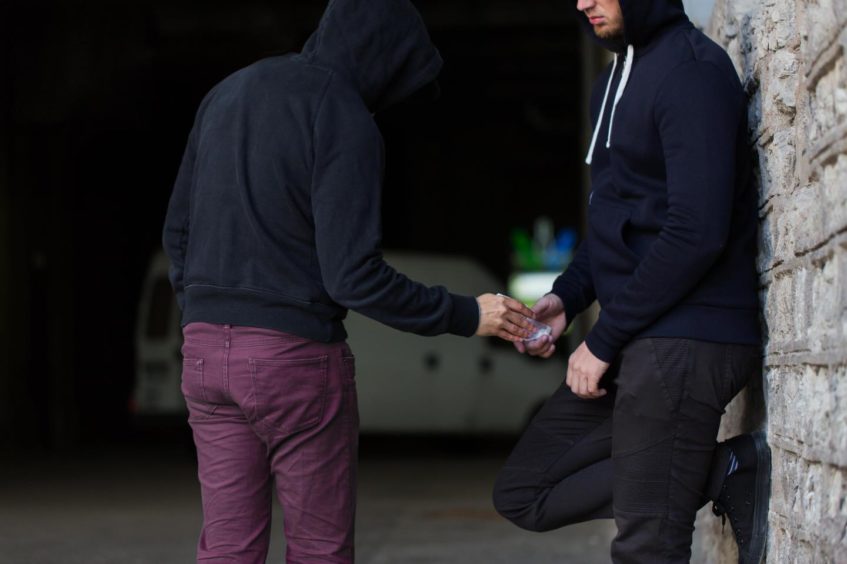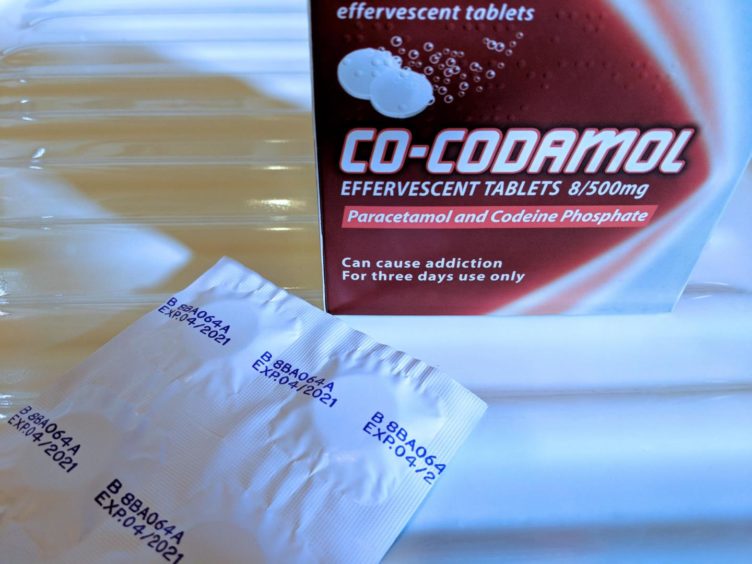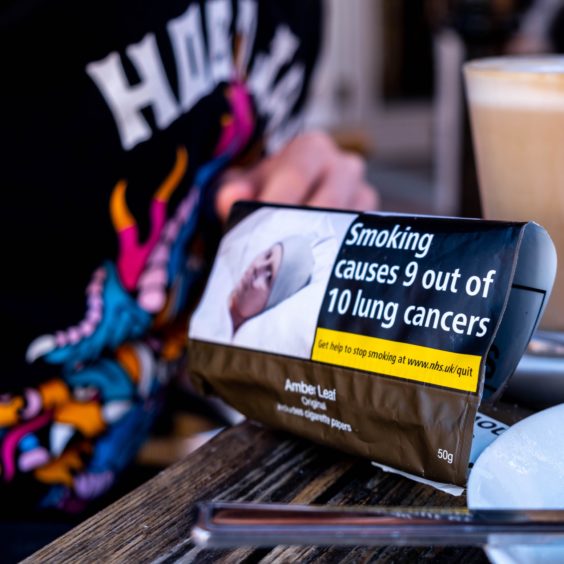If your hit comes in a cleverly designed box with blister packs filled with bright red pills – are you really an addict?
We all make assumptions about what it’s like to score drugs.
Usually it usually involves two sketchy characters brushing hands before scurrying up an alleyway.
For many though the daily reality of living with addiction starts with a perfectly respectable trip to the local pharmacy.
A few quid later, and without a tinfoil wrap in sight, you could be heading home with a box of codeine – powerfully addictive painkillers containing substances that your liver will ultimately metabolise into morphine.
Often they are a convenient, safe solution to a headache.
And they are a medicine. So they must be safe, right?
You wouldn’t be able to buy them otherwise. And what’s the difference between waiting two hours and four hours between a dose.
It’s a story of addiction that’s repeated every day, and I’ve seen it happen.
Codeine is a hidden addiction
We have a silent problem with codeine in Scotland.
The “weak” opiate is used to treat mild to moderate pain, and available to purchase without a prescription.
Unlike alcohol, which attracts a minimum price per unit, pills can be purchased for as little as £3.
As Scotland embarks on its national mission to end the tragedy of climbing drug death rates, it feels like time we tackled our habit with these over the counter medicines
That’s much cheaper than a packet of cigarettes, which now come in plain packaging labelled with horrific images of the health effects of smoking.
Codeine, meanwhile, is sold in attractive packaging plastered with a promise to solve your aches and pains, often displayed prominently behind the pharmacy till.
As Scotland embarks on its national mission to end the tragedy of climbing drug death rates, it feels like time we tackled our habit with these over the counter medicines.
Codeine is easy to obtain – too easy?
Unlike in the UK, where less potent opiates are available to purchase with relatively few barriers, the drugs are tightly controlled elsewhere and available only under the supervision of a doctor.
There are some rules here. They can only be sold in quantities of up to 32 tablets and pharmacy assistants will ask what they are to be used for.
The limit is far from a barrier though – more a tiny hurdle.
A trip to several local pharmacies can easily bag someone huge quantities of codeine for less than £50.
The formulations available are weaker than what a doctor can prescribe, but two codeine tablets at a time can quickly become four, then six then eight then so on.
In the short term it’s the paracetamol or iburprofen which the drug is formulated with, not the opiate, that poses the greatest danger.
Paracetamol toxicity can lead to liver and kidney failure, and even minor overdoses can cause significant harm in the short and longer term, says the British Medical Journal.
Once tolerance builds people often seek out stronger alternatives, buying more powerful drugs from unscrupulous sellers online or graduating to benzodiazepines and other drugs sold on the street.
When codeine comes close to home
I’ve seen the harm these drugs can cause first hand.
I’ve seen how easily people you love can be taken from you as they form dangerous addictions to innocent looking pills.
The person I knew didn’t set out to become addicted to codeine.
Addiction turns someone into a new person, unrecognisable from the one you knew
The medicines were a solution to real pain, before they became a coping mechanism for much more.
Then it was four or six tablets washed down with alcohol to help them sleep, followed by another dose in the morning for the hangover and another later for the withdrawal pains.
Addiction turns someone into a new person, unrecognisable from the one you knew.
Deep down, I know my colleagues and I might be reporting on their death from drugs one day.
It’s a tragic story which is far from unique.
Scotland’s statistics tell a story
As the recent drug death statistics in Scotland showed us too many have known the hopeless pain of addiction.
Codeine and dihydrocodeine compounds played a part in some 200 deaths in 2020.
The drugs were present in the systems of around 15% of people who died, often alongside other substances like benzodiazepines and alcohol.
We don’t know where they were obtained but we do know from what addicts tell us that they play a role.
Drugs Policy Minister Angela Constance has described the increase in drug-related deaths as “heart-breaking”, and reiterated her determination to continue the work to address the crisis.
Further information ➡️ https://t.co/hO3vdT3DAa pic.twitter.com/1EMefuhwXs
— Scot Gov Health (@scotgovhealth) July 30, 2021
While the median age of people dying from drugs in Scotland has increased in recent years, data shows painkiller addiction inflicts the young more commonly.
Data for Scotland wasn’t available, but statistics in England showed 7% of 16-29 had misused painkillers. This compared with 3% of 55-59 year olds.
It also showed painkiller abuse was closely associated with the abuse of other drugs.
A quarter of 16-59 years who reported misusing painkillers had abused other substances.
Most experts agree these numbers are likely to be an underestimation.
So what’s the answer?
But what about a solution?
“We could learn from America” isn’t a sentence you might expect to read here. It wasn’t one I ever expected to write, not least when it comes to healthcare.
But the country has a well reported crisis of addiction to opioids and has arguably taken more aggressive action.
Those alleyways where we imagine the drug deals happening have also allowed us to avoid the reality
It is impossible to purchase opioids legally in the US without a prescription from a doctor.
Even then doctors are under more pressure to ensure the drugs can’t be misused and patients are better protected.
Scotland’s drug deaths crisis has been fuelled by many assumptions. Those alleyways where we imagine the drug deals happening have also allowed us to avoid the reality.
If one drug related death is too many then a multi-faceted approach is necessary.
And that means thinking about how easily we can buy powerful painkillers like codeine with no medical supervision.
Practical measures are possible
We should be seeking to end the sale of these pills in pharmacies, limiting use to those who have seen a doctor.
Drug companies could also be made to print the harm these medicines can do on their packaging.
We could start with the number of people killed by drugs in 2020.
The Medicines and Healthcare Products Regulatory Agency says it continues to monitor the safety of over the counter opiates.
It has also said a reclassification to make them prescription-only could be implemented if it was deemed necessary.
The Scottish Government should be pushing it to make that move sooner rather than later.
Alasdair Clark is a reporter for The Courier who has written on Scotland’s drugs death crisis.



